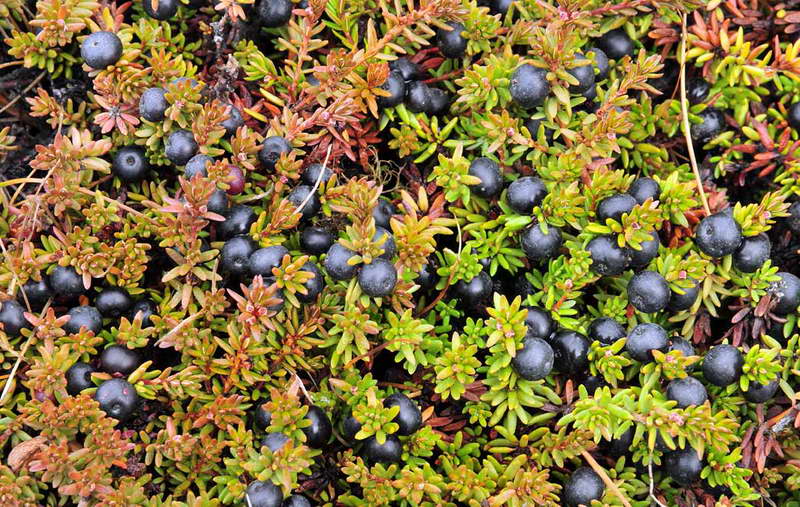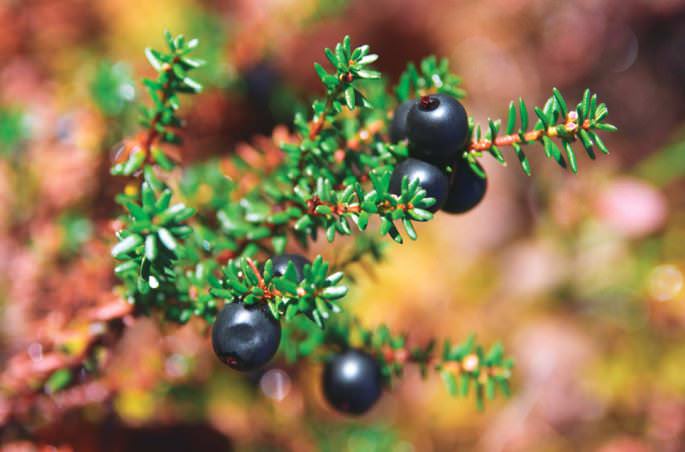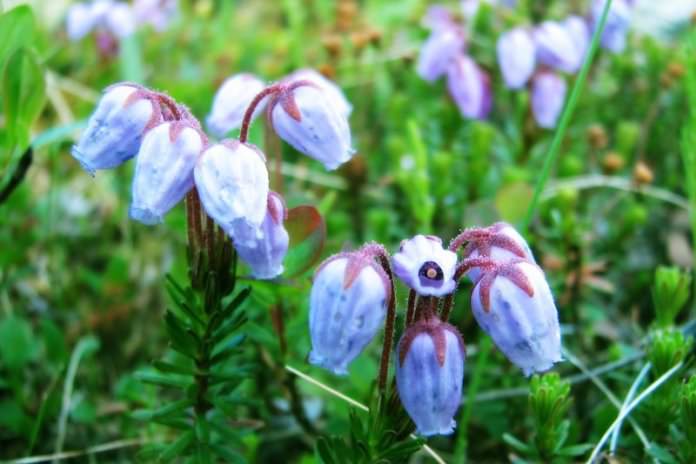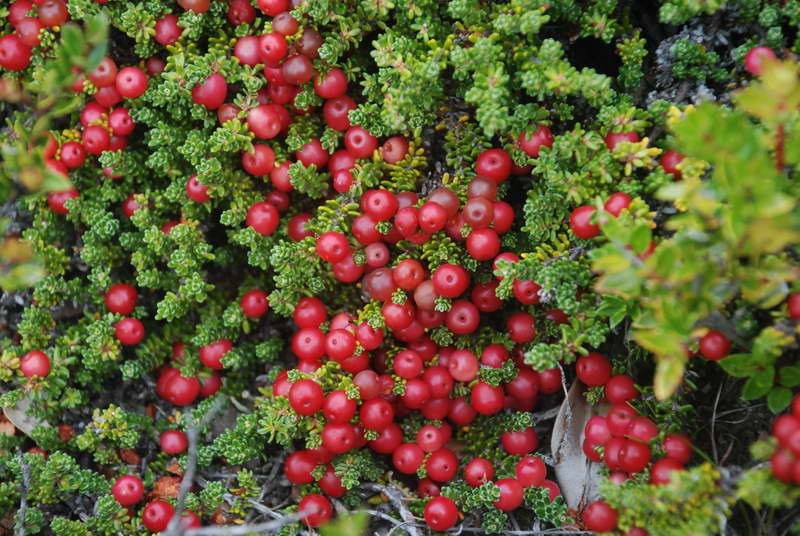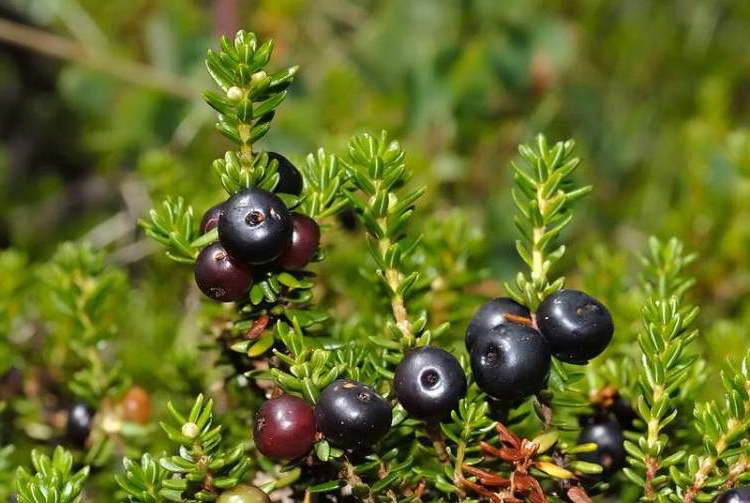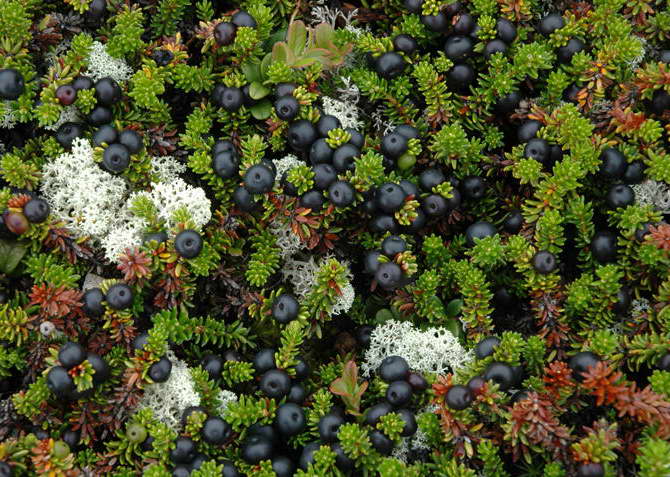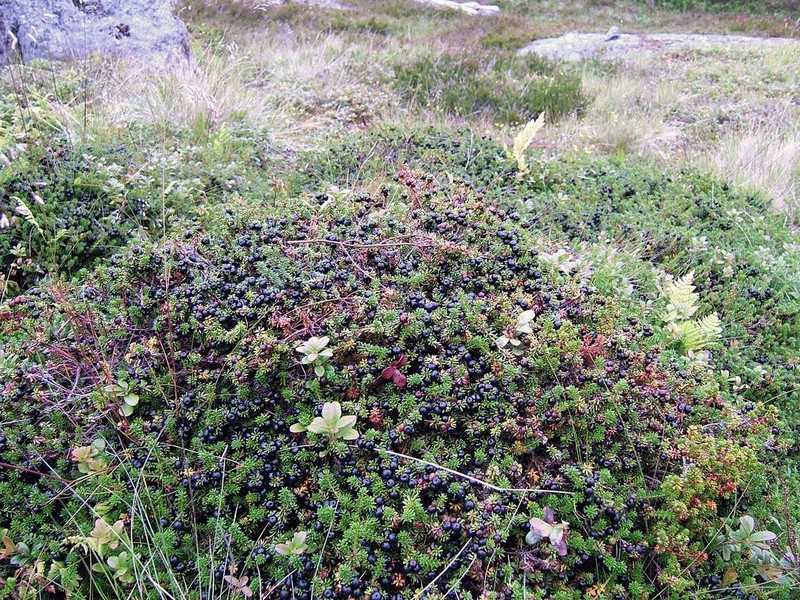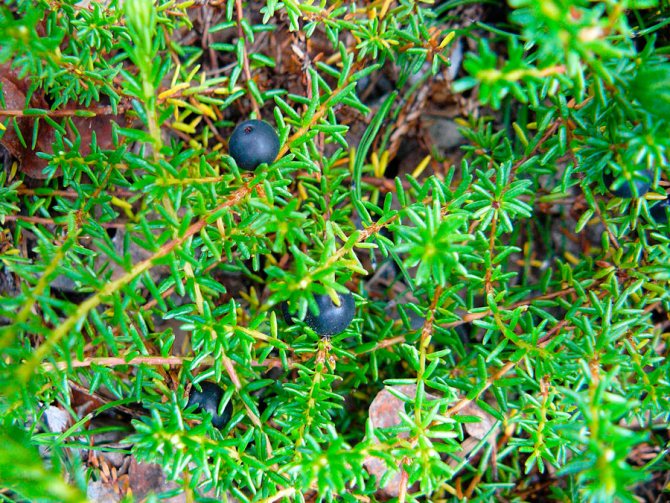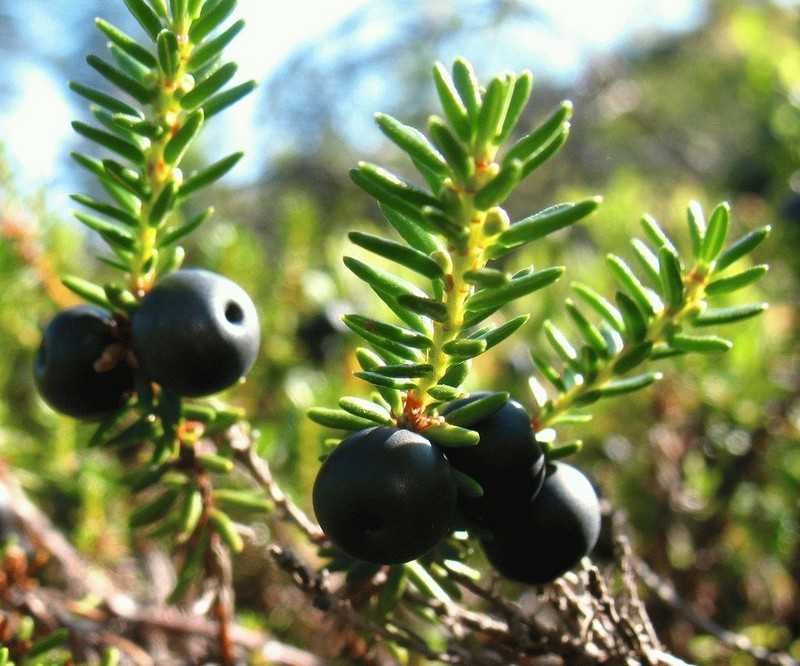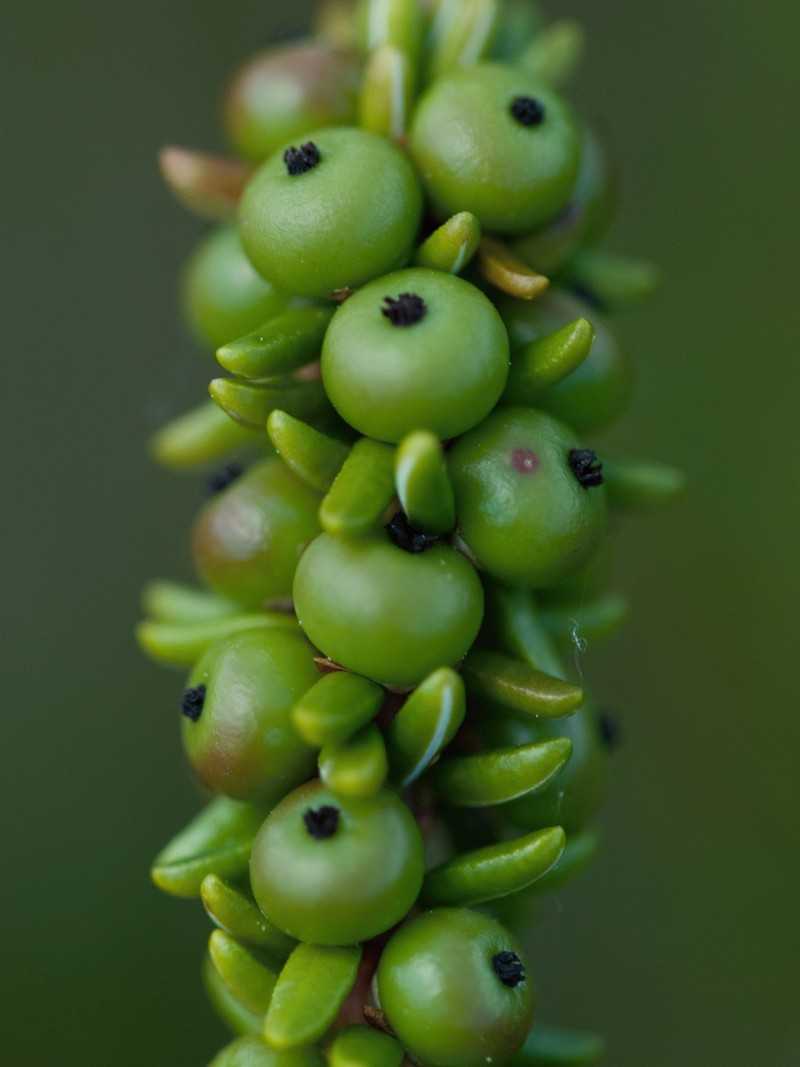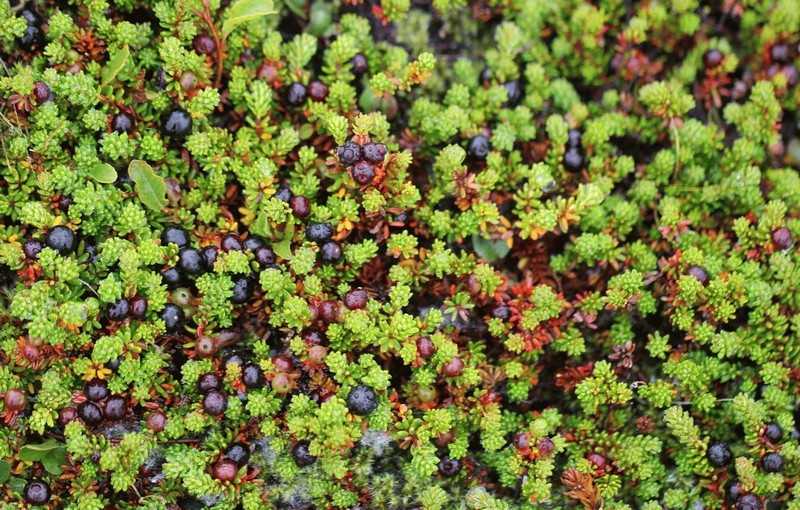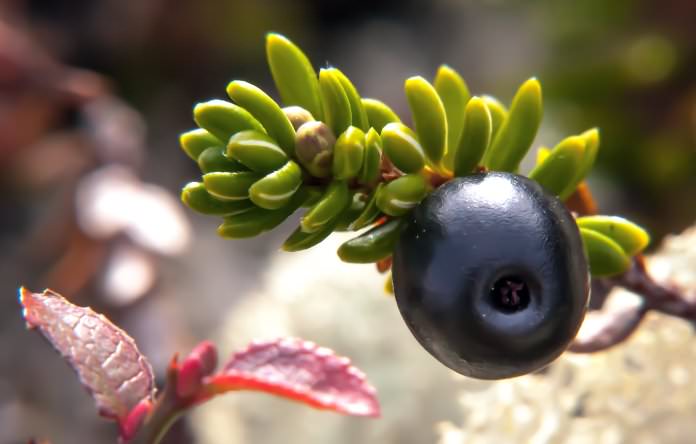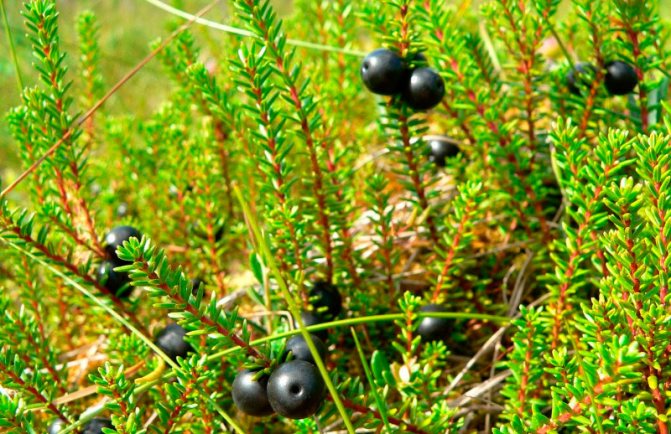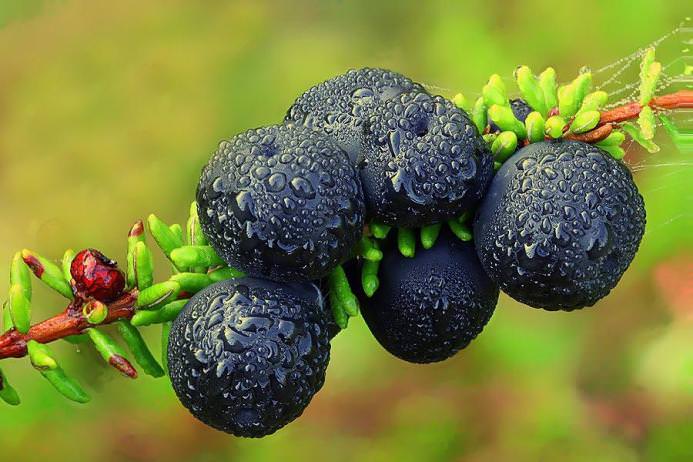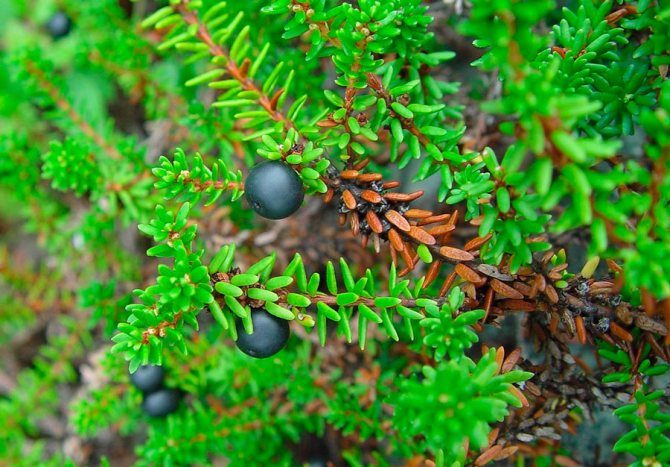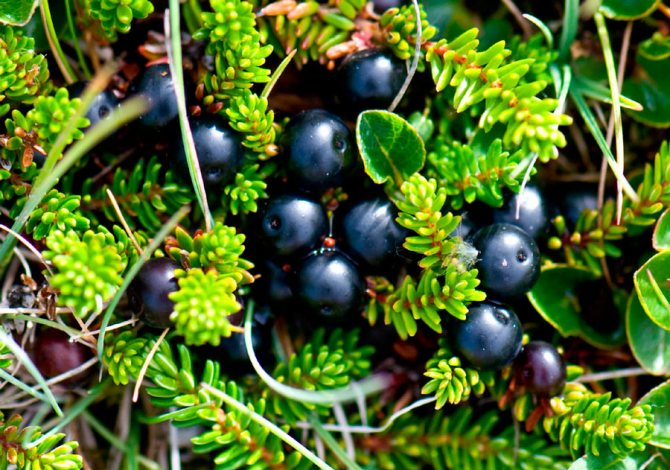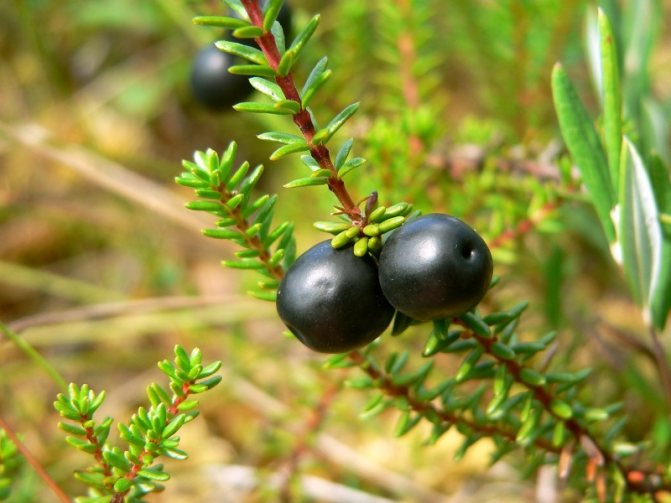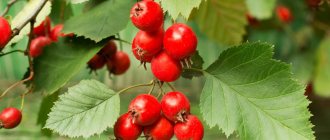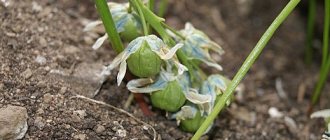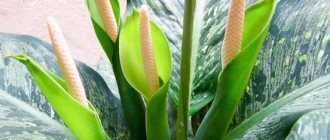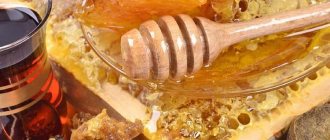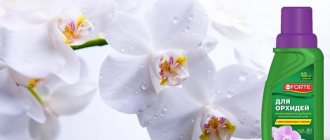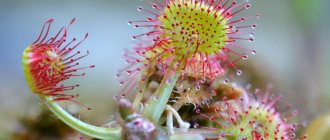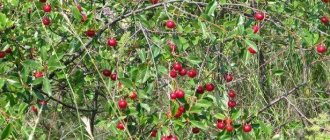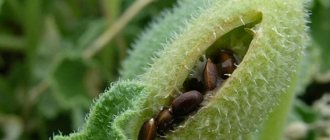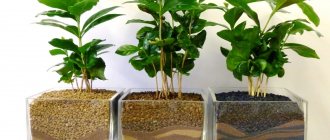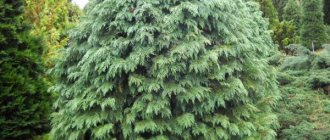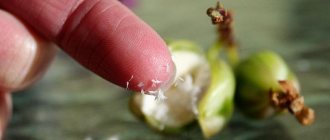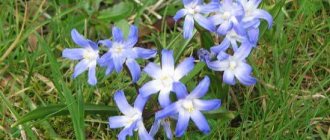Voronika (from Lat. Empetrum) is an evergreen coniferous plant, belongs to the heather family, the leaves resemble needles, the flowers are unremarkable. The shrub is native to South America and the Northern Hemisphere. Used as decorative.
The name of the genus comes from the habitat of the plant - petros means "stone", en - "on".
Crowberry pollinated by butterflies, bees and flies. Provides lighting requirements. Prefers weakly aerated fresh and moist soils. Goats, deer and pigs can eat berries. Crowberry feels good on trampled pastures.
Description of the plant
Bernstein Crowberry Empetrum is an evergreen undersized shrub. The stem reaches a height of 20 cm and has rather long shoots. The plant forms a separate bush. The branches are often called the additional roots of the crowberry. The shade of the main stem is dark brown. Small villi can be seen on young shoots. The bush needs a lot of space to grow.
Nutrients enter the root system thanks to the fungus. The shape of the leaves is elliptical. Their length is 2-8 mm. Externally, the crowberry can be confused with a coniferous plant due to the curl of the foliage. The bush lives for about 5 years.
Name
The Latin name of the genus comes from the Greek words en "on" and petros "stone" - and is associated with the habitat of the plant.
The Russian folk names of the plant are Bagnovka, Voronika (by the color of the berry), bear berry, booze, shrinking (due to the diuretic effect of berries), crowberry (most likely due to a small amount of pulp and a large amount of fresh juice), black grass, shiksha , six.
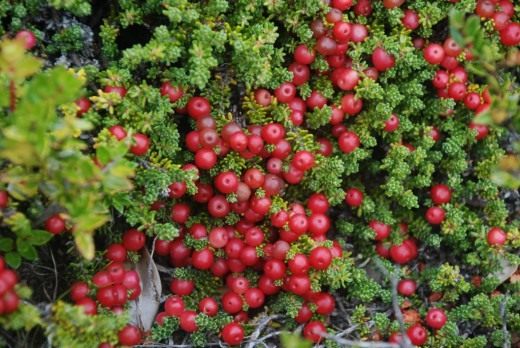
Crowberry red (Empetrum rubrum).
Names in other languages: English. Crowberry, it. Krahenbeeren, Fin. Variksenmarja, fr. Camarine. Literal translation from English, German and Finnish - crow berry.
Application of berries
In folk medicine, black crowberry is widespread. It is used for the preparation of decoctions and infusions. The plant is also used in cosmetology.
Shiksha berry properties:
- Relieves inflammation;
- Has an antispasmodic effect;
- Antiseptic;
- Heals wounds;
- Stops bleeding;
- Relieves pain.
Broths help with mental illness, stomach problems, epilepsy. Often, the shiksha remedy is used for external use. Crowberry berries help with stomatitis. If you wipe your face with an infusion of herbs, you can get rid of acne.
Means from shiksha can calm and relax, therefore, a decoction is often used for fatigue syndromes. The plant was called the “guardian of the soul” in ancient times. In Tibetan medicine, Crowberry is used to treat kidney disease.
Voronika is widely used in folk medicine.
Shiksha for depression. How to get rid of depression


Depression is a serious condition that is often impossible to cure from the outside, for this the patient himself must want to be cured and take some steps for this. The way out of depression should be exactly "Vy-Hod", that is, you should not rely on the help of good doctors and newfangled drugs, which often do not give the desired effect, but act independently. For this, people who have overcome depression themselves, recommend: 1. Exercise. It has long been known that endorphins are produced in the body during exercise.And systematic exercise allows you to quickly get out of a state of depression. Of course, in a depressed state it is difficult to force yourself to get out of a warm comfortable bed an hour before the alarm clock on a dank gray morning, get dressed and go jogging. Even doing exercises is often difficult, even if the strictest vows were made in the evening to start a new life in the morning. But as the saying goes: “if you are unable to get up, fall to the floor,” therefore, in order to break out of this viscous state of depression, it is necessary, having gathered all the strength, to do some kind of sport. Knowledgeable people note that it is running that allows you to escape from problems and heavy thoughts, focusing only on the process of running and the feeling of the second, followed by the third breath. And during a run, the brain is simply not able to be distracted by other thoughts, which gives a person the desired respite. 2. Fasting. A very powerful and radical method that was widely used in Soviet psychiatry, but now it is a little forgotten. In the process of starvation, processes occur in the human body that affect not only the physical, but also the psychological spheres. This method is especially loved by the fair sex, because it not only helps to relieve depression, but also to lose a couple of extra pounds. Fasting should be under the supervision of a doctor, you should start from a couple of days, subsequent courses can last up to 3 weeks. For some, depression completely disappears, especially after long courses, for some it returns after a certain time. It should be remembered that it is impossible to starve and lead a normal life due to frequent weakness, so it is better to use a weekend or vacation for this. 3. Treatment with light. In a large number of people, depression appears in the cold season due to a lack of solar energy. In such cases, courses of light therapy with the help of lamps, the light of which is comparable to the rays of the sun on a warm spring day, help perfectly. In Europe, special lamps are sold, but here they can be replaced with lighting from shops for photographers. 4. Sleep deprivation. For the first time such a method was used in ancient Rome, then it was forgotten and rediscovered in Switzerland in the 20th century, now the method is not very popular, but it is still effective. It consists in the fact that on a certain day the patient does not go to bed at the usual time and is awake at night and all the next day, and the next evening he falls asleep as usual. The main thing in this method is to deal with periods of drowsiness, it is especially difficult at 3-4 o'clock in the morning. At such moments, you need to give up quiet activities and start actively moving, cleaning or doing exercises. You should not skip more than one night, because then the person starts to fall asleep spontaneously, dizziness and hallucinations may begin. If you act correctly, depression goes away the first time in half of the experimenters, so this is a very good chance to get rid of the depressed state. Often, medications for depression do not bring relief, and then the person's cure depends only on him.
Medicinal properties and harm
In folk medicine, crowberry is actively used to treat scurvy, epilepsy, schizophrenia. The medicinal properties of the fruits help with colic, cramps, gastritis, insomnia, kidney and liver diseases. The plant is used for headaches, high blood pressure, bowel disorders.
The infusion will help relieve swelling and even ease the symptoms of anthrax. You can prepare a decoction if your eyes are watery or dry. With the help of a crow, they strengthen hair, heal wounds, ulcers, rashes and other cosmetic defects. Shiksha remedy helps with nervous exhaustion.
With individual intolerance to the components, the use of Crowberry can be harmful. Consuming shiksha is not recommended for pregnant or breastfeeding women. Useful properties and contraindications allow the plant to be used by almost everyone, except for women in position.
Chemical composition
Both the leaves and berries of shiksha have beneficial properties. However, their chemical composition will be different. First of all, it should be noted that shiksha berries contain very large amounts of ascorbic acid - in the range of 70–90 mg per 100 g of mass. According to this indicator, the crowberry is somewhat inferior to the princess and the wild rose, but still it is considered a fairly high level. It is thanks to this content of vitamin C that the berries of this plant have become one of the most effective remedies for scurvy in the northern regions. In addition, ascorbic acid has antioxidant properties and has a beneficial effect on the state of blood vessels and the circulatory system in general.
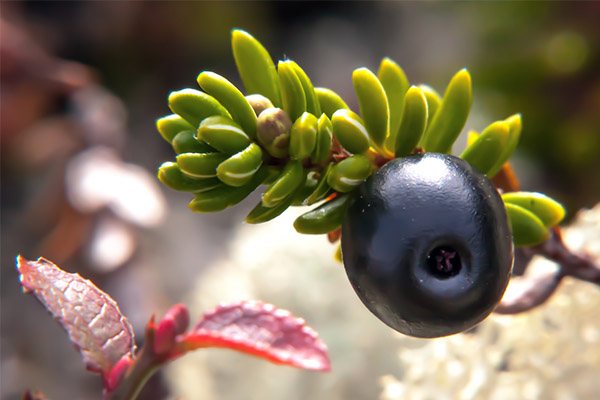

So, berries contain:
- Quercetin, which, like other flavonoids, has antioxidant and anti-inflammatory properties.
- Rutin - the value of this substance can hardly be overestimated. It reduces platelet aggregation and prevents blood clots, so in the long term, crowberry can be used to treat strokes and heart attacks. Rutin also improves vascular health and has anti-inflammatory activity. A number of studies show that it normalizes the level of absorption of iodine by the thyroid gland, but so far this aspect has not been studied enough.
- Anthocyanins are pigments that give Crowberry fruits their dark color. At the same time, they have an anti-inflammatory effect, and also improve the barrier function of the intestine and, in general, normalize lipid metabolism.
- Fatty oils required for normal metabolism.
- Coumarins. They are mainly represented by ellagolic acid, which has cardioprotective properties, which makes crowberry useful in cardiovascular diseases. It has acid and anti-inflammatory effect, and also reparative properties, that is, it promotes tissue regeneration.
- Ursolic acid, which is considered an important component of antidiabetic agents and helps fight obesity.
- Tannins and wax.
The fruits also contain various types of fruit sugars and essential oils, albeit in insufficient quantities to give them a pronounced taste.
The leaves and branches of the plant contain coumarins, alkaloids, essential oils, and vitamin C, albeit in smaller quantities. In addition, the aerial part of Siberian shiksha contains both the aforementioned quercetin and rutin with their unique properties, and tannins, which have astringent properties and make the plant an effective remedy for diarrhea. Caffeic acid is present in the leaves and branches of the plant. It has anti-inflammatory and immunomodulatory effects, and some studies have shown that it can stop the development of malignant neoplasms (however, this aspect is still not well understood). Of the trace elements contained in the leaves, it is also worth highlighting manganese.
Planting, care and propagation of a plant
In the wild, shiksha can be found in sunny areas. The soil should be acidic sandy or peaty. Vodyanika does not tolerate stagnation of water in the ground, dense earth. The clay soil on the site must be diluted with sand, peat or sod soil to make it suitable for planting shiksha.
Features of planting black crowberry:
- The plant is planted at a depth of 40 cm;
- The distance between the bushes should be 30-50 cm;
- When planting, you need to water the crowberry well;
- The root collar of the crowberry should be buried 2 cm into the soil.
After planting, the shiksha needs regular watering and weeding. But as it grows, the plant is watered only during the dry season. If you fill up a layer of peat, then the moisture remains much longer.
During the season, you need to perform only one top dressing with Nitroammophos. Use 50 g of substance per m2. In the spring, dried and frozen stems need to be cut from the bush.Vodyanika belongs to frost-resistant plants, therefore, insulation is not required for the winter.
Reproduction is carried out by cuttings. Their optimal length is no more than 5 cm. It will take no more than three weeks for them to take root in the ground.
In the wild, shiksha can be found in sunny areas
Recipes for drinks with black crow
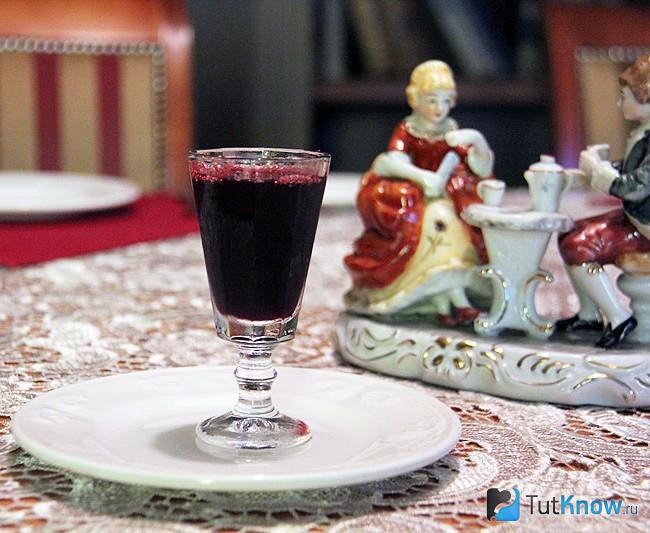

Since the black crowberry is eaten in a completely different form, it is possible to prepare juice, compote, tea, liqueur from it. The drinks made on its basis have a delicate, sweet and sour taste, pleasant aroma and are very nutritious. They can be used both for medicinal purposes and in cooking.
How and what to cook, read below:
- Compote
... Bring clean water (3 L) to a boil, wash the Crowberry berries (1 cup), blueberries (0.5 cups) and raspberries (200 g). All this in turn, about every 5 minutes, pour into the pan. Boil the berries for 20 minutes and add sugar (100 g) to the liquid somewhere in the middle. Before turning off the gas, add citric acid here (literally 3 g) and stir the compote well. If you want to leave it for the winter, then pour the drink into sterilized cans, roll it up and leave it in the basement. - Tea
... It is prepared from berries (1 tbsp. L.), Leaves (1 tbsp. L.) And twigs (5-6 pcs.). All this is combined together, poured over with boiled water, covered with a lid and kept for 10 minutes. After that, honey (1-2 tsp) and lemon (2-3 slices) are put into the drink, mix well and drink in small sips instead of ordinary black tea. It is especially good for breakfast, as it gives strength and vigor, improves mood and tones the body. By the way, jam made according to the recipe indicated above will be very useful to it. - Pouring
... Combine vanilla sugar (2 tsp.), Plain sugar (1 tablespoon), crowberry juice (500 ml) and cloves (3 pcs.). Place the mixture in an enamel saucepan over low heat, bring to a boil, strain, pour into a glass jar and leave in the refrigerator for at least two weeks. As a result, you will have a delicious homemade liqueur with a low alcohol content.
Collection, procurement and storage
For harvesting, you will need to rip off the upper parts of the shoots. The collection is carried out during the flowering periods of the shiksha. Then the shoots are laid out in a layer of no more than 5 cm to dry. The work area must be well ventilated. Usually a pallet with shiksha is placed under a canopy or just in a shady place.
Procurement of medicinal raw materials implies periodic inversion of the shoots. This will prevent the development of mold and mildew. After drying, the crowberry can be packaged in bags made of natural fabric so that the air circulates freely.
The shelf life of shiksha should not exceed 2 years. Further, the plant loses its medicinal properties and will not be able to help if necessary.
How to grow crowberry or crowberry or shiksha from seeds
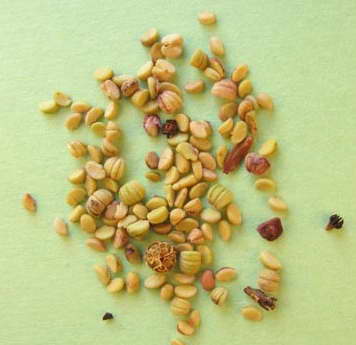

Seeds of crowberry shiksha crowberry photo
With seed reproduction, there are no difficulties - the seeds germinate well, and it is a pleasure to admire the seedlings.
When to plant crowberry seeds in the ground?
You can sow seeds directly into the ground in early spring under a film cover, but in this case, further care for the sprouts is difficult. This method is rarely used.
When to plant crowberry seeds for seedlings?
To get seedlings of crowberry by spring, plant it with seeds for seedlings at home. It is better to start planting crowberries in the fall, but no later than February-March.
- Prepare individual cups with a volume of at least 0.5 liters, make drainage holes, lay a drainage layer of sand and fill the cups with universal seedling soil, you can mix it in half with peat.
- Plant the seeds, one at a time, in a cup, 1 cm deep.
- Moisten the ground, cover the crops with cling film.
- Germinate seeds at a temperature of 16-18 ° C, do not overheat the crops. The plant is native to the tundra, where it is never too hot.
- When shoots appear, remove the film, place the seedlings on a cool light window or glazed loggia, where the temperature will not drop below + 10 ° C.
- Continue further care by maintaining a moderate moisture content in the substrate.
- Take the plants out onto the street or balcony, at the same time tempering them and providing the necessary coolness (the air temperature is needed above + 10 ° C).
The grown seedlings of crowberries are planted in the ground as soon as the threat of night frosts has passed.
Spread
The crowberry is distributed throughout the Northern Hemisphere - from the temperate zone to the subarctic zone (Russia, continental Western Europe from Finland to Spain, Great Britain, Iceland, Greenland, USA, Canada, Japan, Korea, northern China, Mongolia).
Crowberry is also found in the Southern Hemisphere - in the Chilean Andes, on Tierra del Fuego, on the Falkland Islands (Malvinas), as well as on the islands of Tristan da Cunha. In Russia, the plant is widespread in the northern regions, Siberia, the Far East, including Sakhalin, Kamchatka and the Kuril Islands; also occurs in the non-chernozem zone. The homeland of the crowberry is the Northern Hemisphere. Its current bipolar distribution is associated with the penetration of the plant to the south during the Ice Age.
Typical habitats of the plant are sphagnum bogs, moss-lichen and stony tundra, coniferous (usually pine) forests, where it often forms a continuous cover. Crowdberry is also found on open sands (spits, dunes), on granite outcrops; in the mountains it grows in the subalpine and alpine zones.
Additional materials
- Active ingredients of medicinal plants
- Endometriosis - the scourge of the modern woman
- Black shiksha - treasure of the cold edge
- Where to find the keys to health
- Hypertension as a consequence of lifestyle
- Borovaya uterus and company
- Pregnancy - from conception to childbirth
- Maryin root - forget about the ailment
- Climax like the decline of women's health
- What herbs can cure mastopathy
- Causes and consequences of menstrual irregularities
- Hair is the grass in the flower bed of our head
- There is grass for everyone to hurt
- Leukemia as a systemic disease
- Premenstrual tension syndrome - PMS
When the fruit of the juniper is harvested
Pine berries begin to be harvested from the first days of September., when the berries are fully ripe and contain the greatest amount of nutrients, and are harvested until the end of October. As mentioned above, ripe buds are dark in color.
Before collecting these medicinal fruits, you should completely make sure that it is indeed a juniper bush of a species acceptable for medical use, since a mistake can lead to serious consequences. Therefore, the collection should be carried out in those places where this plant culture actually grows.
Read in which forests and regions of Russia the juniper grows.
Berries can be harvested not only from common juniper, but also from prickly juniper (red). In the latter species, ripe berries are red-brown in color and can be used in medicine, as they have diuretic properties.
But berries from Cossack juniper are better not to collect, since they contain the toxic substance sabinol. This evergreen shrub with dark cones is similar to the permitted varieties. It can be confused with an ordinary look.

